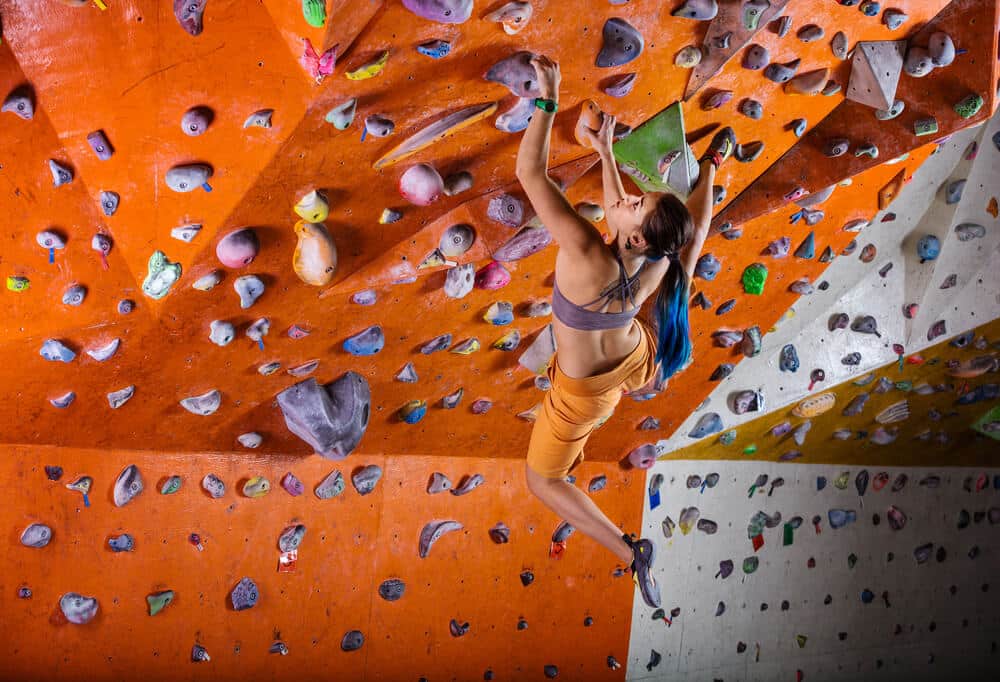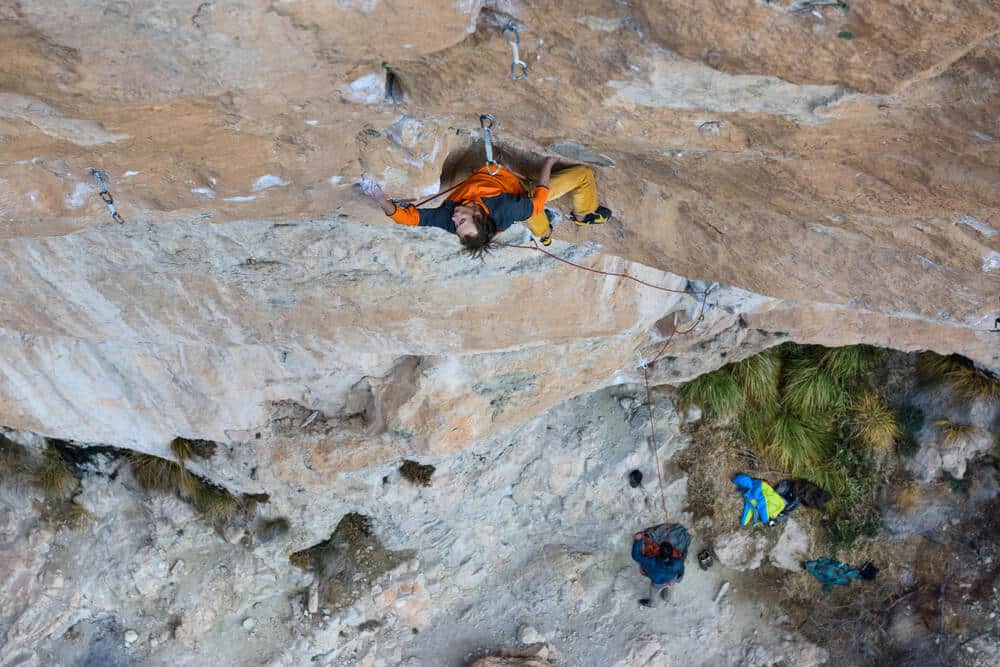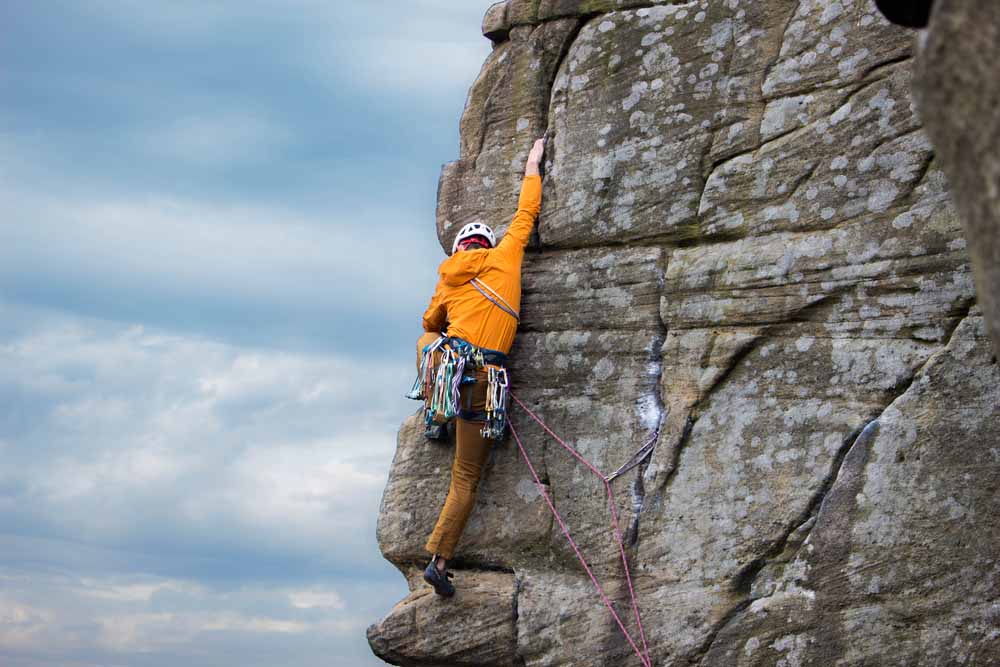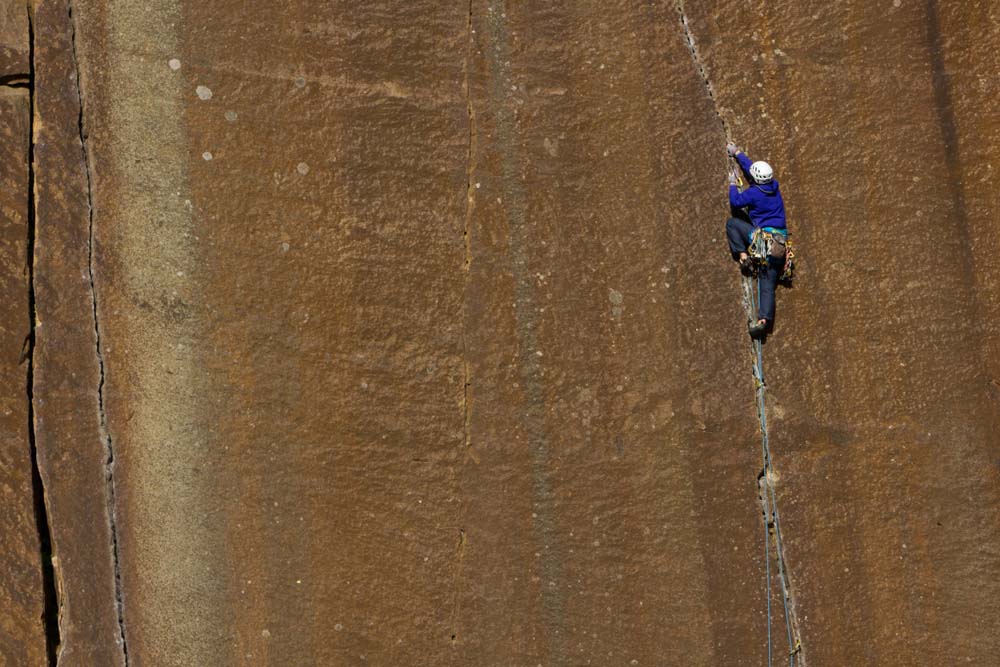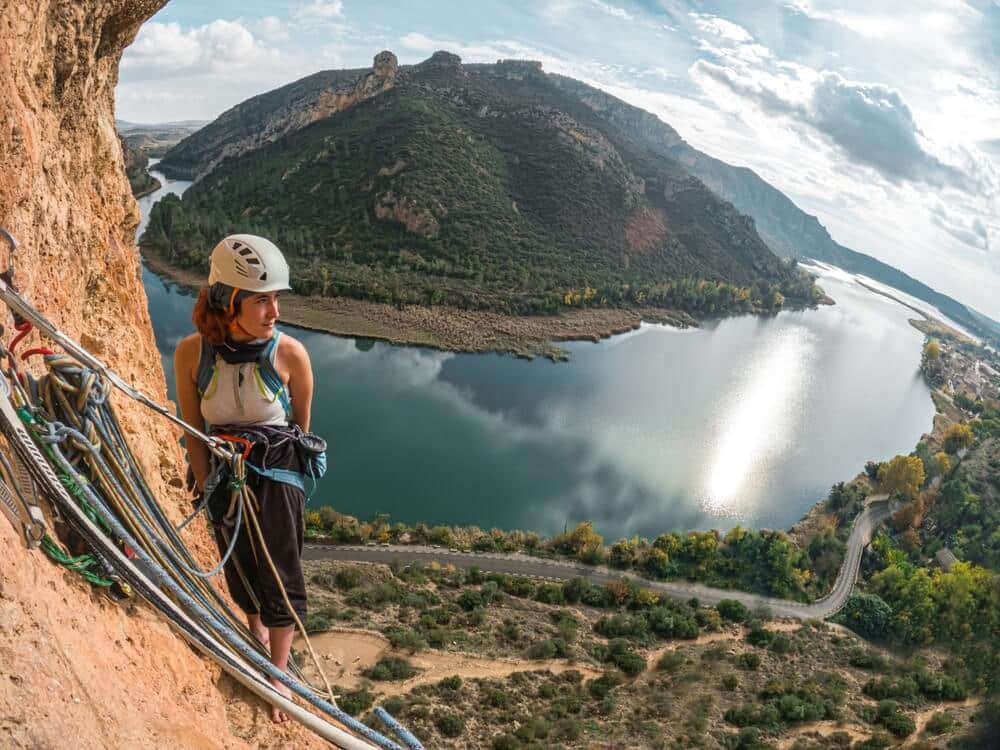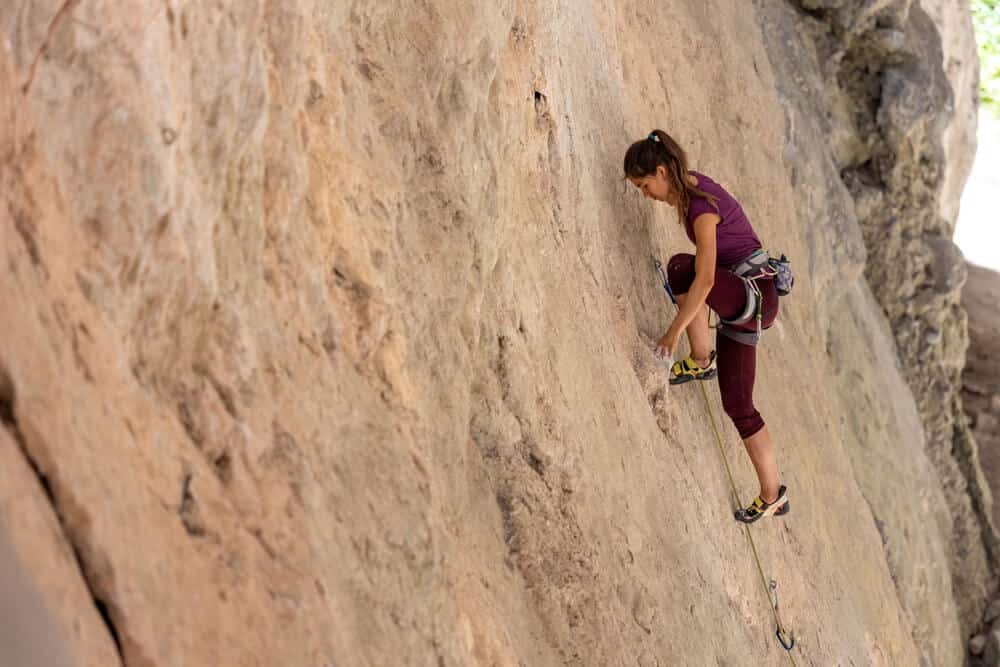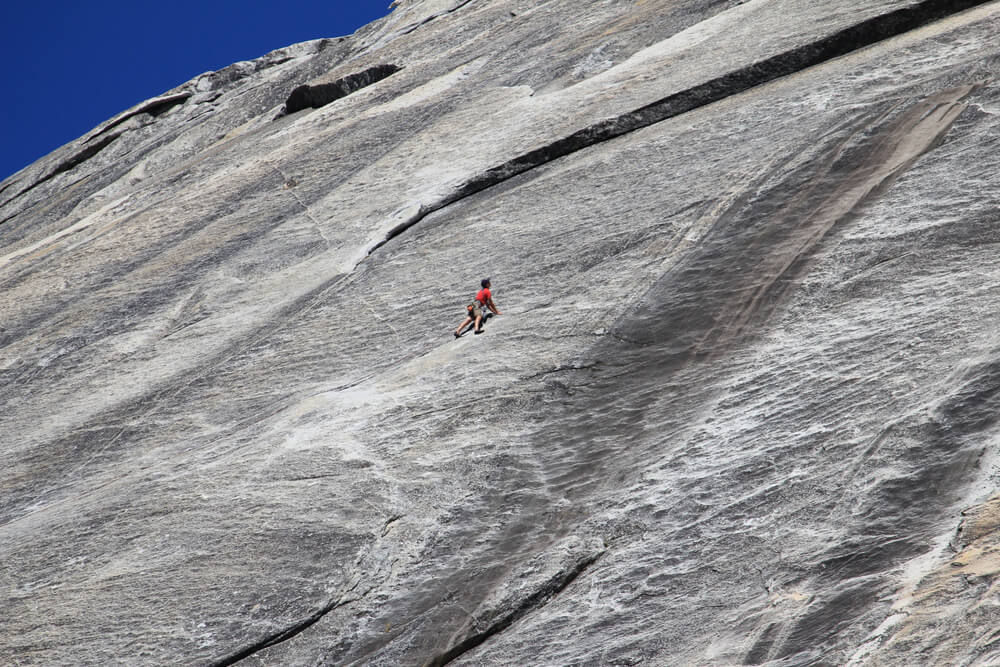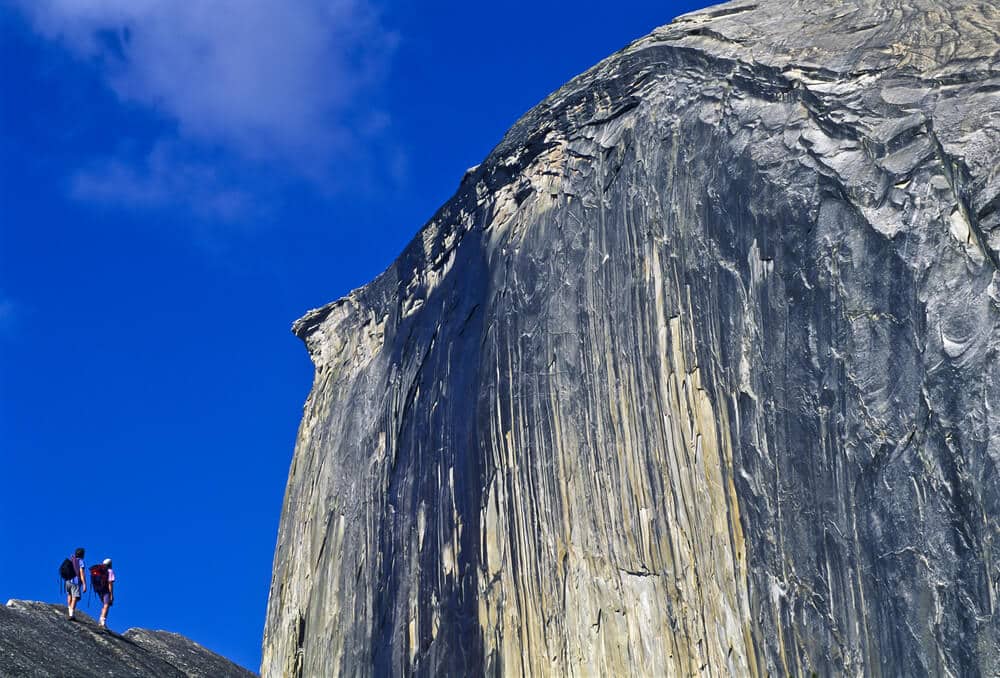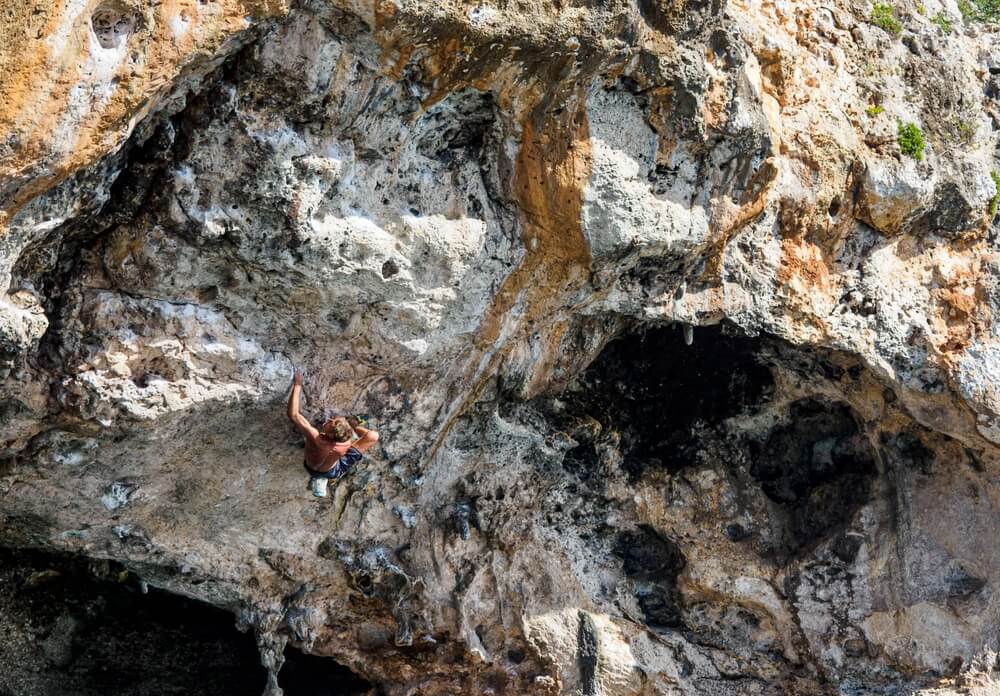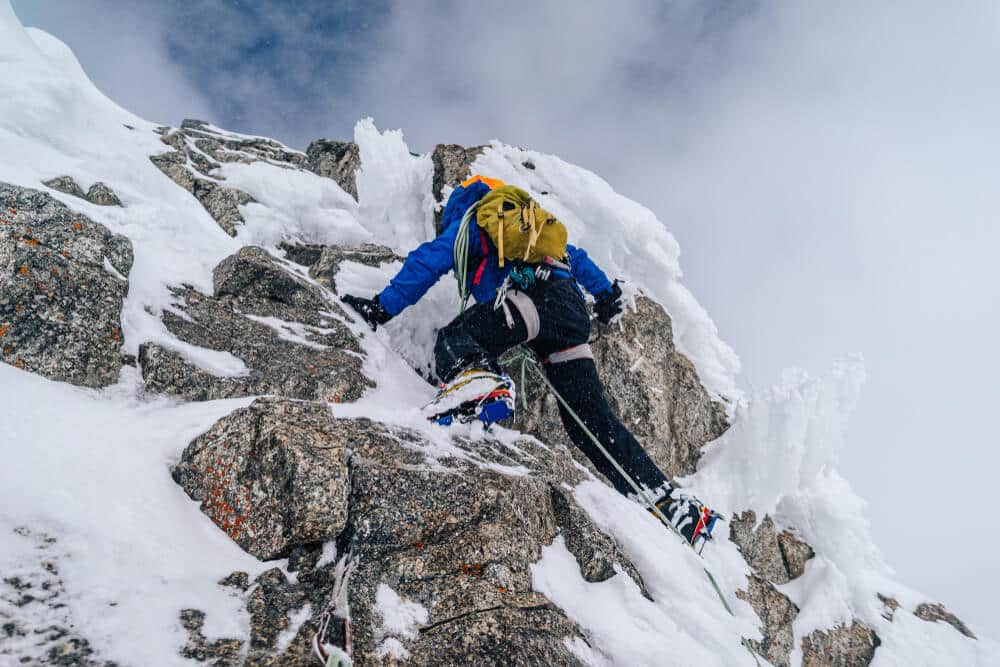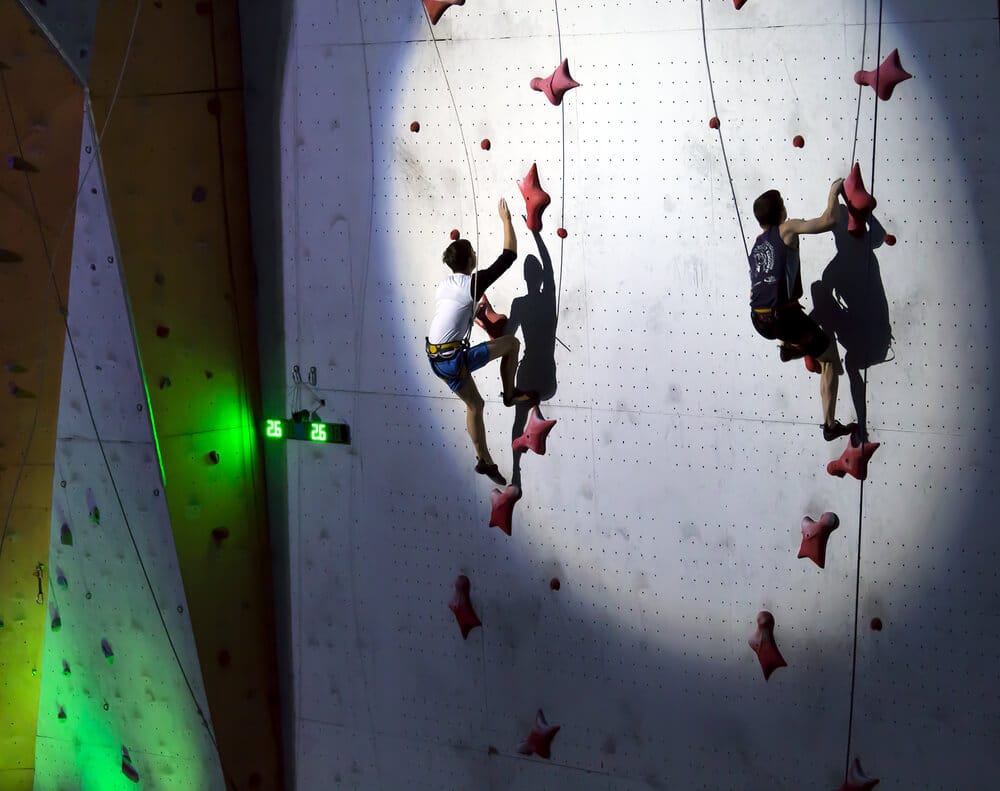As you begin to climb more and more, you may get curious about the different types of rock climbing that exist. Or, you may hear someone talking about something like aid climbing or alpine climbing, and you might want to know what exactly this means. If that sounds like you, you’re in the right place! This article will explain the various types of climbing and how they differ.
Bouldering
One of the most common types of rock climbing is bouldering. This is how many people get started! It’s easy to boulder in a gym because all you need is some shoes and chalk.
Bouldering refers to climbing small walls that are usually 15 feet or less. Instead of being tied into a rope, when bouldering the climber falls onto mats or crash pads on the ground. Although this discipline is relatively simple, it’s also where many elite climbers focus. Since boulder problems are short, they include the hardest possible moves and many climbers use boulders to push the limit of what is possible in the sport.
Bouldering is common in the climbing gym, but it’s also a popular outdoor discipline. There are many fantastic places to boulder outside: you just need to bring a crash pad or two to protect the problems.
Sport climbing
Sport climbing is another common type of rock climbing. It is a form of roped climbing where the climber clips the rope into bolts as they ascend. This way, if the climber falls, they will be caught by the last bolt that they clipped.
Sport climbing can be done indoors or outdoors. When climbing indoors, the bolts will have permadraws on them, meaning you clip the rope to the carabiner that is already hanging off the bolt. Outdoors, you’ll need your own gear (quickdraws) to clip to each bolt. Other gear you need for sport climbing includes a helmet and a belay device.
When sport climbers climb routes, there’s lots they need to think about. They need to make efficient upward progress and learn not to waste energy on easier moves. As the sport climber ascends, they’ll also have to find comfortable positions for clipping the rope into bolts. And a falling climber needs to know how to fall safely!
Lead climbing
Lead climbing is a necessary skill for sport climbing. It’s a bit more advanced than top roping. The lead climber is the climber that is climbing first, clipping the rope into bolts. Lead climbing isn’t specific to sport climbing; it also occurs in disciplines such as trad and alpine climbing.
Lead climbing carries some risk, since falling above bolts or protection means the lead climber will fall a ways before being caught by the rope. However, sport climbs are usually bolted in a safe manner, especially in the gym. To minimize risk, it’s important to have a good belayer!
Top rope climbing
In contrast to lead climbing, top roping refers to roped climbing where the rope is already through the anchor points at the top of the climb. In top rope climbing, there is no risk of a big fall: if you fall, you will be caught by the rope right away.
Top roping is easy to do in a climbing gym, because there are usually already top ropes set up. Outdoors, it’s more difficult. You usually need one person to lead a climb: they can then set up an anchor and other people can top rope it. Occasionally, you might encounter spots where you can set up top ropes outdoors by walking around to the top of the cliff. However, this requires good anchor building skills!
Trad climbing
Trad climbing, or traditional climbing, is a form of the sport where the leader places their own protection into cracks and natural features in the rock. The climber then clips the rope to this protection– the pieces then function like bolts and catch the climber if they fall. The gear is then cleaned either by the follower as they climb, or by the leader on their way down (if there is a bolted anchor to lower off).
Trad climbing is an advanced form of rock climbing that requires lots of climbing gear and knowledge. Trad climbers need to have adequate protective gear to climb safely. This gear is primarily cams and nuts, both of which are placed into cracks.
The leader needs to place the trad gear well, otherwise there is a chance it will not hold a fall. The leader also needs to have a good understanding of spacing: they need to place enough gear to keep them safe if they fall at any point, but they also need to make sure they won’t run out of gear part way up the climb.
Crack climbing
Crack climbing is a form of rock climbing in which the climber jams their body into cracks in the rock in order to ascend. Most climbing consists of the climber grabbing holds to pull themselves up the wall. In crack climbing, you jam instead of grab. Crack climbers learn how to fill the space in a crack with their hands, feet, or even their whole body!
Since trad gear is primarily places in cracks, many crack climbs are also trad climbs. However, some places have bolted cracks– this is more common in Europe than in America. Sometimes climbing gyms also have cracks you can top rope.
Multi pitch climbing
Multi pitch climbing refers to a route that is more than a single rope length. To ascend a face this long, it will need to be broken down into more than one “pitch”. So, one climber leads up the wall until they reach an anchor (or in some cases, build their own). Then, the next climber climbs up to join them as the leader belays from the top.
Now the climbers are at the top of first pitch, and they repeat this process until they reach the top of the climb: one climber leads a pitch, sets up the anchor, and belays the follower up to them. Some multi pitches will put you on top of a formation that you can walk off of, while others will require the climbers to rappel down to the ground.
Multi pitch climbs can be anywhere from two pitches to 20+ pitches! Many multi pitch routes consist of traditional climbing, but there are multi pitch sport climbs as well.
Free climbing
Free climbing refers to climbing in which you use nothing but the rock face itself to ascend. This doesn’t mean you can’t use a climbing rope and protective gear– free climbing is not the same as free soloing. When you free climb, you aren’t grabbing gear to pull yourself up the wall, you’re ascending with your own body. Free climbing can include sport climbing and trad climbing.
Free soloing
In contrast to free climbing, free soloing means that the climber ascends a rock face without a rope or climbing gear. Thus, if they fall, they will fall all the way to the ground. Free solo climbing is much less common than free climbing, but some climbers are drawn towards this discipline.
Of all the types of climbing, this one is undoubtedly the most dangerous and carries an inherent risk of serious injury or death. Free soloing is only possible when climbing outdoors; gyms (for good reason) do not allow it.
Alex Honnold is probably the most famous free soloist of all time, a reputation that was confirmed when he did the unimaginable: free soloed Freerider, a 13a big wall climb that ascends crown jewel of Yosemite: El Capitan. Of all the free solo climbs ever completed, this was likely the most ambitious!
Aid climbing
Of all the types of climbing that exist, aid climbing may be the strangest. It’s the opposite of free climbing. When you aid climb, you use gear that you place in order to ascend the wall. So, an aid climber may place a piece of removable protection, such as a cam, and then grab the cam in order to pull themselves up the wall.
This discipline requires a lot of specialized equipment, such as ladders and hooks. Aid climbers typically have two ladders attached to their harness so they can clip them to the gear that they place. So the climber would clip one ladder to a piece and stand in it, then place another piece higher and clip the other ladder to that one and step up into it. This way, you have something to step on besides the rock.
Aid climbing is a complex discipline that most climbers never explore. However, it is very useful in certain situations. For example, many climbers use aid techniques to ascend very large rock faces, such as El Capitan. Unless you’re a 5.13 trad climber, an ascent of a wall like El Cap will require that you aid climb.
Big wall climbing
Big wall climbing is a form of outdoor climbing in which climbers ascend multi pitch routes that take more than a single day to climb. These routes tend to be over 1,000 vertical feet. The actual climbing on a big wall is like other multi pitch climbs, though there is often aid climbing involves in big wall ascents.
What really differentiates big walls from other types of rock climbing is the challenging logistics and the skills and gear you need to make this type of ascent. Since big wall routes take more than a day, climbers spend nights on the wall. Therefore, they might need a portaledge to sleep on if natural ledges don’t exist. They’ll also need to bring up gear and cooking equipment, which requires a haul bag. Climbers must set up a haul system at the anchor of each pitch and haul their bag of stuff up with them.
Big wall climbing is complex, but many climbers enjoy exploring it. Having big wall skills gives you the opportunity to ascend the most impressive rock faces in the world.
Deep water soloing
Deep water soloing is a very unique form of rock climbing! It’s only possible in very specific places, but the general principle is that you climb over a body of deep water (usually the ocean). You don’t use a rope or harness– when you fall, you simply fall into the water. This means all you need is a chalk bag and some climbing shoes!
Deep water soloing usually refers to sport-type climbs, not boulders. But it’s not technically sport climbing, since there’s no bolts or rope. It’s like free soloing but without the risk of a ground fall!
Places with great deep water soloing draw climbers from all over the world. One of the most famous is Mallorca, an island off the coast of Spain and a great place to explore this unique discipline of the sport. Other good deep water solo locations to check out include Portugal and Maui.
Ice climbing
There are several types of climbing that are challenging to break into, and ice climbing is definitely one of these. It’s a complex discipline that requires specific equipment, knowledge, and the right location. Ice climbing means climbing some sort of frozen surface. This can be frozen waterfalls, or it can take place in a more alpine environment, ascending ice and snow to reach a mountain peak.
When you ice climb, you use tools such as ice axes in your hands to grab the ice, and you wear crampons on your feet to be able to step up. Similar to traditional climbing, ice climbers place gear as they ascend to protect them, such as ice screws. This protection can be tricky to place well; falls are relatively rare in ice climbing.
Ice climbing grading uses a different scale than rock climbing, and the grade depends primarily on the steepness of the terrain. Waterfalls are where the steeper climbs are typically found and where ice climbers can test their limits. Alpine ice climbing tends to be more adventure-focused, and often consists of mixed climbing (climbing some on ice and some on rock).
Speed climbing
Speed climbing is the only type of climbing on this list that can’t be done on real rock– it’s only possible on an artificial wall. It’s form of competition climbing in which athletes ascend a 15 meter route as fast as possible. The route is always the same, and consists of 20 handholds and 11 footholds. It’s not a varied climb– all of the handholds are exactly the same!
The route isn’t particularly hard, probably in the 5.10 range. It’s simply a race: athletes are attached auto belays and try to get to the top as fast as possible. The current men’s record is 4.90 seconds, and the women’s is 6.24 seconds. Sometimes climbing gyms will have a speed climb set so you can try it out!
Conclusion
There are many types of rock climbing, and this article served to outline the primary ones. It can feel overwhelming to understand the sport when you first start climbing, but as you meet people and learn more you’ll soon have a good understanding of the many disciplines. From top roping to free soloing, you should now have lots of useful climber knowledge!


